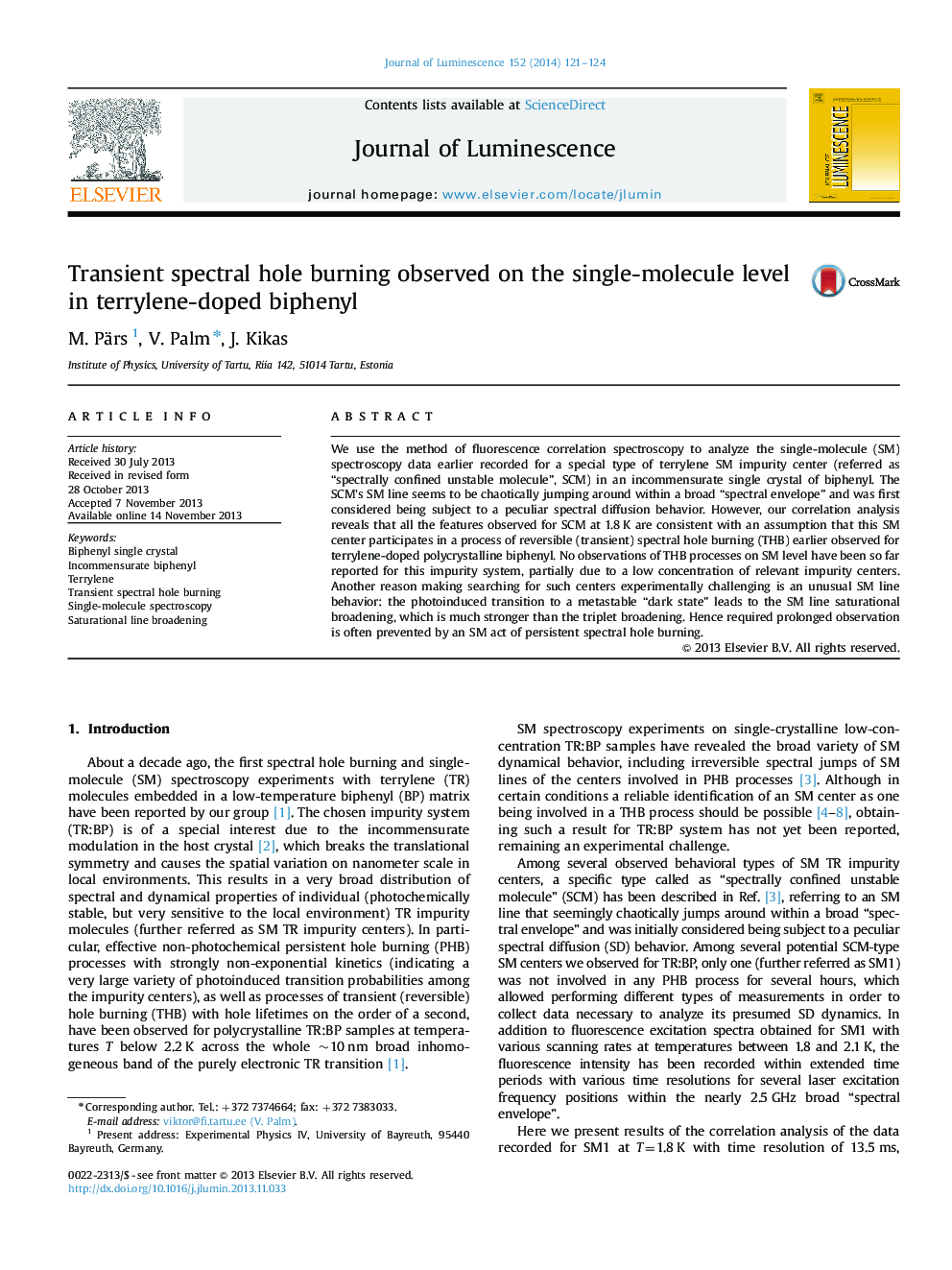| Article ID | Journal | Published Year | Pages | File Type |
|---|---|---|---|---|
| 5399560 | Journal of Luminescence | 2014 | 4 Pages |
â¢SCM-special type of terrylene single-molecule center in incommensurate biphenyl.â¢An unusually stable SCM was investigated during several hours at T=1.8 K.â¢SCM undergoes photoinduced transitions to an unknown metastable “dark state” (DS).â¢The long DS lifetime causes strong saturational broadening of SCM spectral line.â¢SCM participates in an earlier observed process of transient hole burning.
We use the method of fluorescence correlation spectroscopy to analyze the single-molecule (SM) spectroscopy data earlier recorded for a special type of terrylene SM impurity center (referred as “spectrally confined unstable molecule”, SCM) in an incommensurate single crystal of biphenyl. The SCM's SM line seems to be chaotically jumping around within a broad “spectral envelope” and was first considered being subject to a peculiar spectral diffusion behavior. However, our correlation analysis reveals that all the features observed for SCM at 1.8Â K are consistent with an assumption that this SM center participates in a process of reversible (transient) spectral hole burning (THB) earlier observed for terrylene-doped polycrystalline biphenyl. No observations of THB processes on SM level have been so far reported for this impurity system, partially due to a low concentration of relevant impurity centers. Another reason making searching for such centers experimentally challenging is an unusual SM line behavior: the photoinduced transition to a metastable “dark state” leads to the SM line saturational broadening, which is much stronger than the triplet broadening. Hence required prolonged observation is often prevented by an SM act of persistent spectral hole burning.
